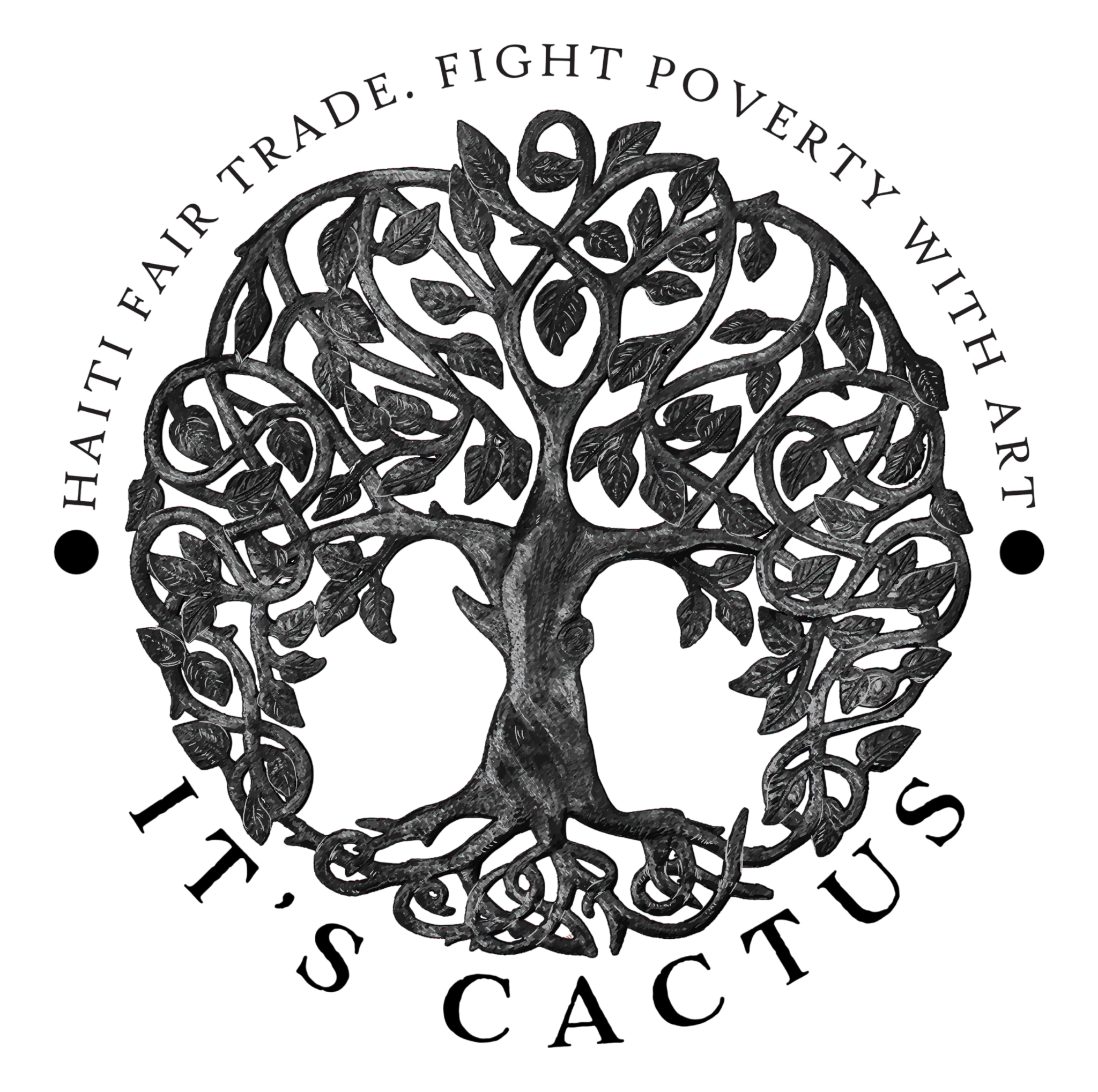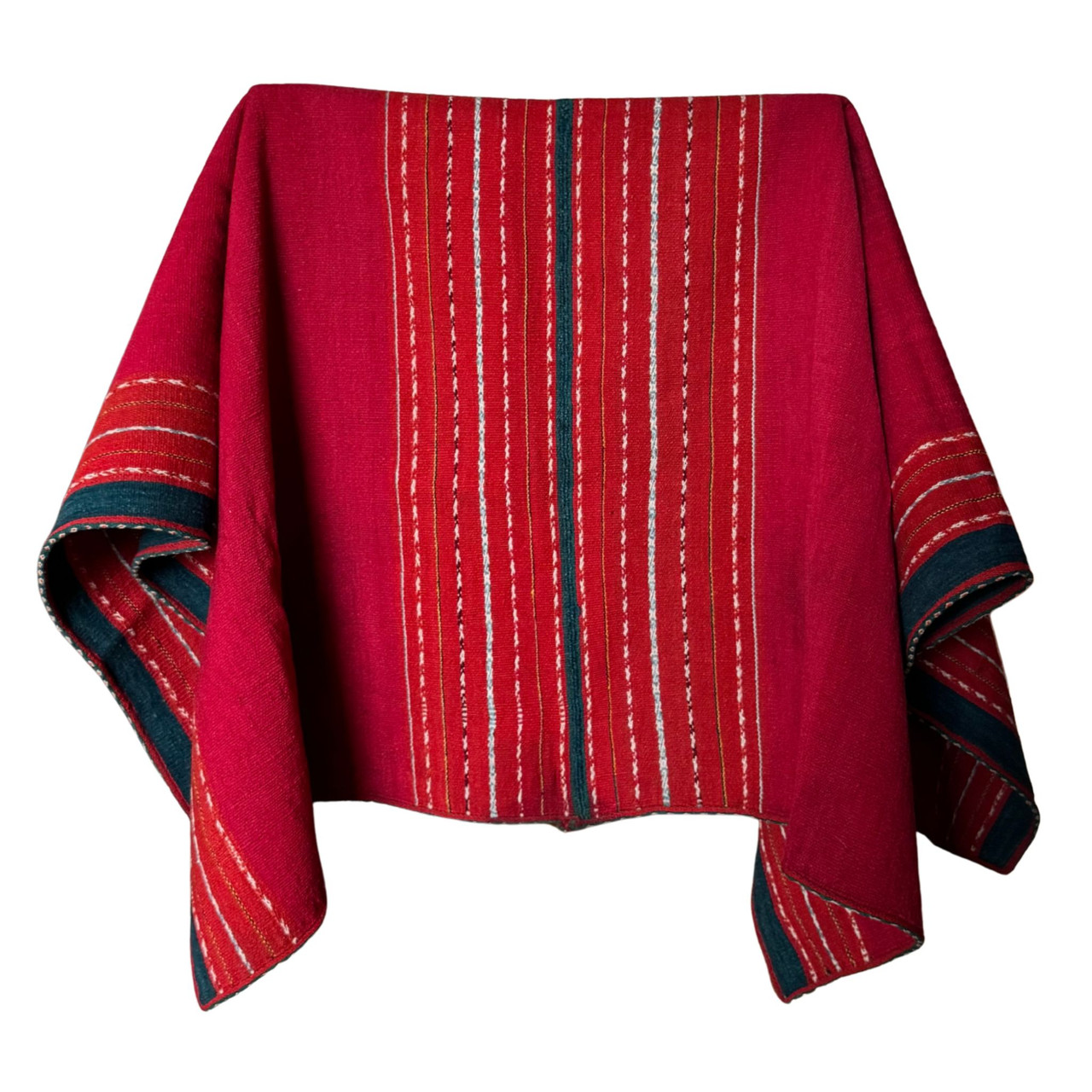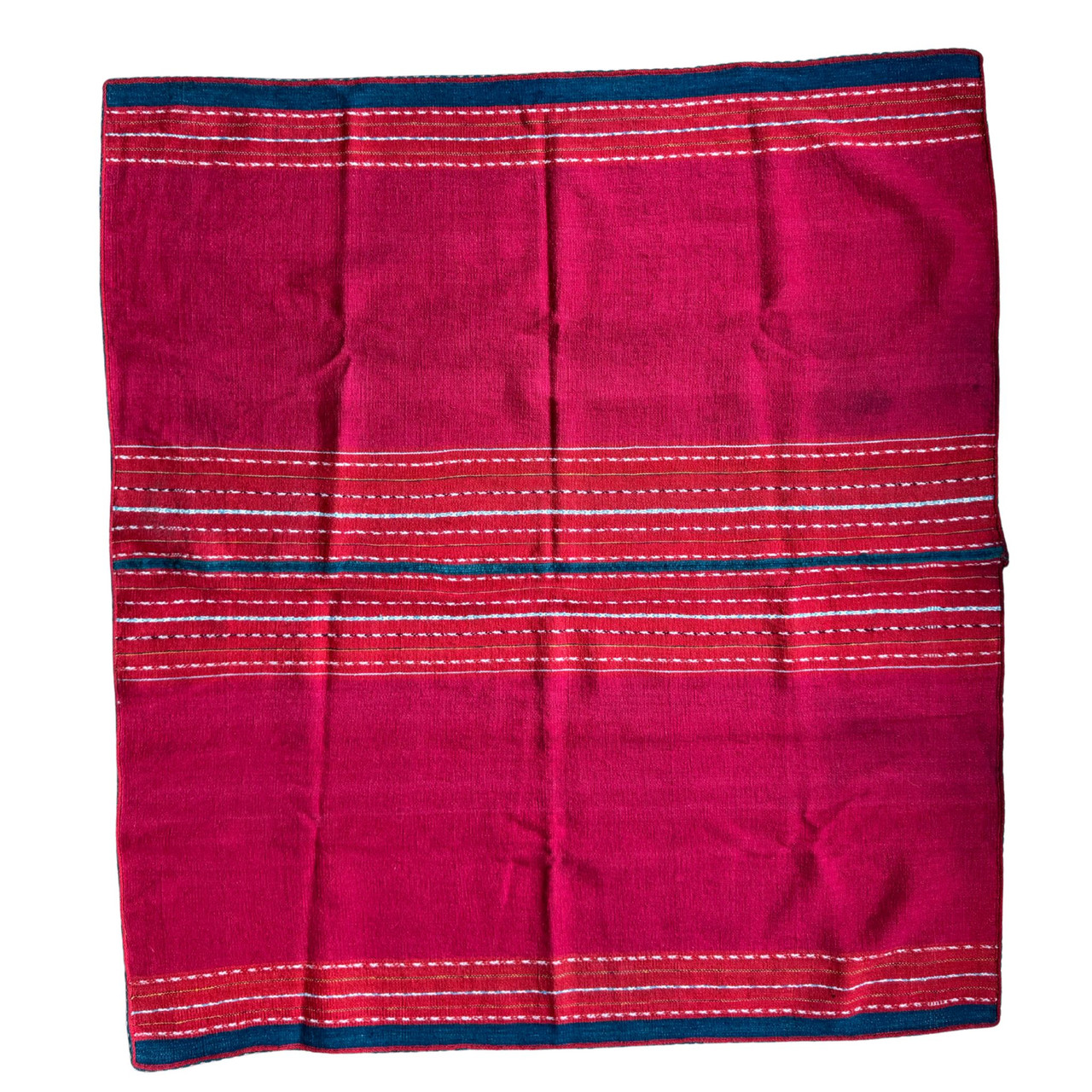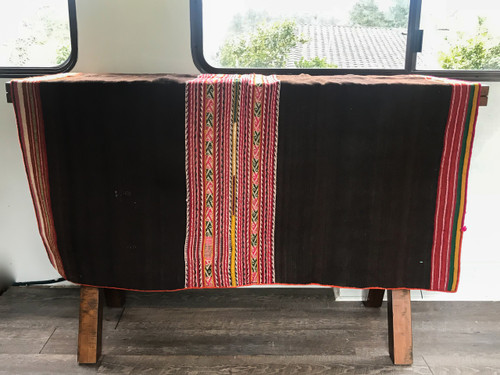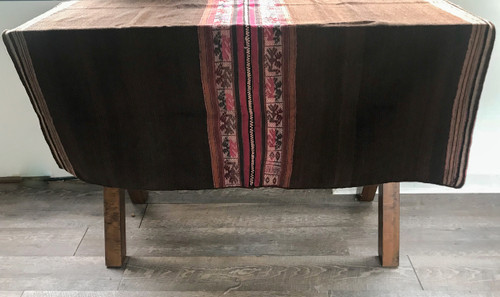Product Description
This vintage manta (aguayo) from Tarabuco, Bolivia is a rare and finely woven example of Andean textile art. Made with handspun wool and natural dyes, it reflects the traditional weaving techniques of Tarabuco, a region celebrated for its rich indigenous culture.
Traditionally, mantas like this were used by Bolivian women as shawls, blankets, or carrying cloths—often to carry babies or transport goods. Today, they are valued as collectible folk textiles and admired as boho-style home décor, wall hangings, or decorative throws.
Details:
-
Origin: Tarabuco, Bolivia (Andean region)
-
Type: Vintage manta / aguayo 42" x 46"
-
Material: Handwoven wool, naturally dyed
-
Weave: Finely woven, excellent craftsmanship
-
Traditional Use: Shawl, blanket, carrying cloth
-
Modern Use: Home décor, boho throw, wall hanging
-
Condition: Vintage – great condition
-
Authentic piece from Tarabuco, known for high-quality weaving
-
Naturally dyed with colors from local plants and minerals
-
Finely woven, soft texture – a mark of superior artistry
-
A collectible textile that can be both worn and displayed
This Tarabuco manta is more than a textile—it is a living piece of Bolivian cultural heritage, handmade with artistry passed down for generations.
This Cochabamba manta is more than a textile — it is a living piece of Bolivian history, reflecting centuries of weaving tradition and artistry.
The creation of this manta begins with the shearing of sheep’s wool, followed by the phar stage, where the wool is first spun. This initial spinning is crucial, laying the groundwork for what will become a remarkable piece of art.
The dyeing process is a labor of love and precision. Master weavers carefully select and measure natural dyes sourced from the region’s abundant flora and fauna—leaves, tree bark, flowers, fruits, and even minerals. Each hue is achieved through a meticulous balance, as even the slightest miscalculation can jeopardize days of hard work. The result is a vibrant palette that reflects the beauty of the Andes.
Following dyeing, the manta undergoes the "k’anti" process, where fine spinning techniques are employed to prepare for the intricate designs. The complex k’uychi stage, or “rainbow,” involves the careful combination of colors on the loom, requiring the weaver to count and memorize the necessary threads for each unique design. This stage is where the manta truly comes to life, as the weaver’s creativity and skill manifest in beautiful patterns.
The final step, "awakipa", involves the delicate embroidery along the edges of the manta. This technique adds a layer of sophistication and showcases the weaver's artistry, making each piece not just a textile, but a work of art.

